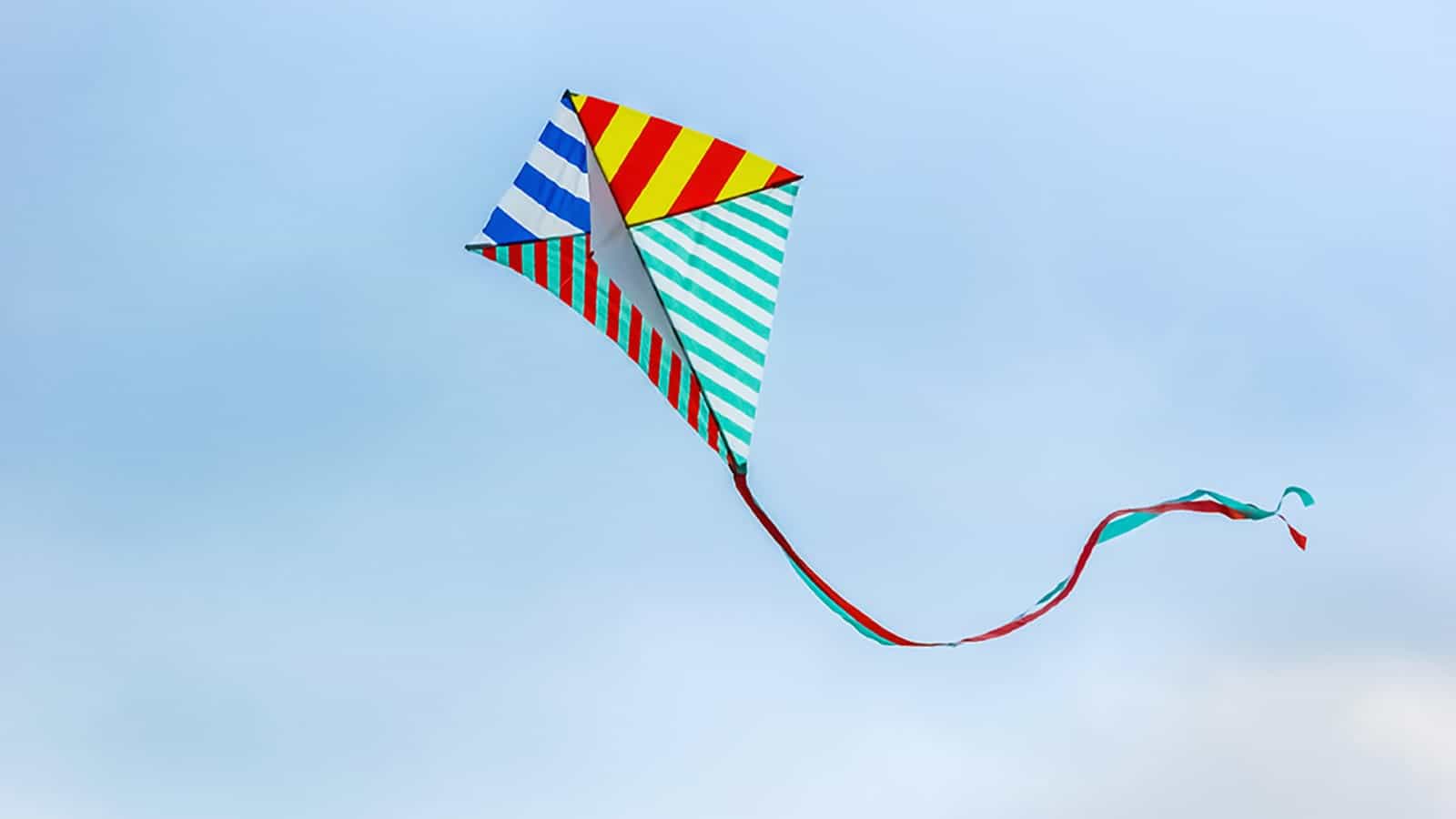As Spring approaches, the wind brings memories of running down the street as a kid trying to get a kite in the air. With many families focused on soccer and dance practice plus homework and chores, we’ve forgotten to make time for joyous fun. After all, when was the last time you went running through a field with your kids? As a bonus, parents and nannies can use your kite flying time to teach your children about engineering and aerodynamics. Children can create simple kites from paper, light wood, and string or purchase simple to complex kits at local stores or online.
There are four basic parts to a simple kite.
Every kite begins with a lifting surface (usually called the sail). The sail can be made of any number of materials including paper, silk, old t-shirts, or ribbon. The sail is supported by a structure or framework. Framework designs can be traditional quadrilateral or stretched diamond shape. More complex patterns can have a series of connected box shapes. Other shapes include the sled, 3-spar barndoor, and the delta kite which is recommended for beginners. The framework is attached to a line or string. There are different ways to attach the line to the frame including a direct tie or with line segments that can be adjusted to change the flight angle. The last part of the kite is the tail. Depending on the design of the kite, the tail can be ornamental or can be designed to provide stability to the kite.
No one knows who created the first kite, but there are many known uses of kites throughout history. In peace times, kites have been used to move things over land and across rivers. Scientists have used kites to test theories ranging from electricity to aviation. In wartime, kites have been used to disrupt radar signals and gather information. More recently, kites have become the basis of varying sports that combine the kites with boards (for water or snow surfing) and wheels or skates (for Kite buggying and Kite skating). These historical and modern uses can be great inspiration for flying a kite with your children.
Whether trying to carry a ball or just doing stunts, let your children choose and assemble their kite since building the kite is a large part of the total experience.
Children enjoy crafts and take pride in putting things together. Allow for creativity by encouraging children to add designs to the sail using markers and stickers. Making the tail can be a lot of fun as children can practice tying knots or weaving materials together.
Once the kite is completed and before attempting to fly it, the children should learn some safety rules. First, choose a flying location that is open and away from obstacles. Always keep the kite under control and be able to quickly reel it in if necessary. Be aware of kite lines as they can wrap around people, trees, and light poles causing damage. NEVER fly kites near power lines, an airport, or near cars or other people. Make sure to check the weather and don’t fly a kite in a storm.
Now, it’s time to check the wind which is a great opportunity to teach children about wind speed, direction, crosswinds, updrafts, and gusts. Lacking wind is a challenge but so is too much wind which can break the kite or cause it to spiral out of control. Ideal conditions will vary based on the design of the kite, but most kites do well with 4-10 mph winds. You don’t need to feel a strong wind; a breeze is usually enough to fly a simple kite.
Kite flying provides hundreds of opportunities for children to experiment with design, technique, and aerodynamics.
Younger children may simply like to watch the kite in the sky while older children may get into the aerodynamics of varying designs and even begin to develop their own unique versions. Elementary-aged children may want to build a kite to carry a camera or ball while older children can determine the center of gravity after learning about the forces on a kite.
Kite flying is a great activity for children of many ages. There is a sense of accomplishment when c children build a kite and see it fly. Take a few hours this weekend and challenge everyone in your family to build a kite, then see which one flies the highest.


Recent Comments